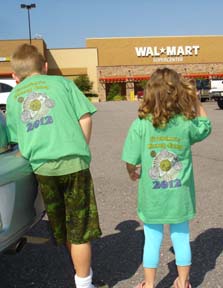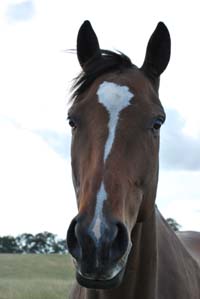Grandma Rie’s 2012 Money Camp
Teaching the next generation to successfully handle money and personal finances is normally a family responsibility. Although parents bear much of the burden to teach, train and model good personal finance, extended family members can also contribute.
Although my grown children do very well in the personal finance arena, they learned from us by osmosis, without any special or formal training by my spouse or I. When they presented me with grandchildren, I vowed that I would take an active part in teaching financial literacy to them.
 As a result, I started a one week ‘Grandma Rie’s Money Camp’ in 2011 and held our second annual one this year.
As a result, I started a one week ‘Grandma Rie’s Money Camp’ in 2011 and held our second annual one this year.
If you haven’t already, please read about what a money camp is, how to prepare for one and a guide to having one. This post describes what my grandchildren and I did this year in Grandma’s Money Camp.
Background.
My grandchildren at the time of this year’s camp were 8 and almost 5. We held it at our condo on the lake this year – for added fun and memories!
Knowing that I wasn’t used to having 2 active kids around all the time, I lined up several sets of adults to come visit and help out throughout the week.
Money concepts covered.
Coin and currency identification and values.
Another grandma (my sister-in-law) and I helped the kids create a money value poster, all the while talking through money values with them. We pasted coins on the poster up to a golden dollar, and then put an equal sign and pasted the equivalent coinage on the other side so: a nickel – 5 pennies, a dime – 2 nickels and etc. The decorated the posters with their own version of bills and signed them.
Each kid was presented with a quarter coin collection book, along with a few quarters to go in it. One was a National Parks and sites book and the other was a State quarters book. I found the books at our local Hobby Lobby store, although I’m sure they are available in a lot of places.
The psychology of money.
This year I introduced the idea that the kids could give and wanted to teach why people do give and what the giver and recipient get from the act of giving.
To do that, I checked in with their Mom to see what would be an appropriate gift and she came up with the idea of making stepping stones. It was no picnic hauling the cement, bucket and mixing paddle to the condo and no fun mixing up the concrete in the 100 degree heat. Each kid picked a mold (a big circle or a heart shape – which were cake pans picked up at the local thrift store). The kids had fun decorating their stones and the parents are proudly displaying them in their home garden now.
To learn why money doesn’t assure happiness we watched the dvd Richie Rich
which shows the parent’s of a wealthy family being kidnapped for the treasure in their family vault. The treasure turned out to be all of the things that brought back happy memories of family life. The kids loved this movie, watched it several times and then took it home with them. It was especially fun, since we all went on vacation this year and saw Mount Rushmore together. In the movie, the family vault was in Mt. Richmore!
We read books to teach that you shouldn’t enable dependency by continuing to give people stuff (If You Give a Pig a Pancake Big Book and The Little Red Hen) or spend you money on vanity (The Emperor’s New Clothes).
We learned that it’s not easy to find treasure by reading a book about using a metal detector to find buried treasure at the seashore, then used our own metal detector to try to find treasure on the lake shore (we found a nickel).
Making money.
Building on last years discussions and activities, we took a field trip to town and walked through a shopping mall to find out what kind of businesses there were and how they made money.
We read the book, “Jobs People Do”, to learn how other people make money. This book was a big hit. Unfortunately, I didn’t record the author. It was all about a particular town and what the people in it do. It was funny because all of the characters in the book had names that were puns, so it held the interest of both ages.
Each of them brought a toy to sell on eBay. They took pictures of the toy and I created the listings while they watched and helped me describe their toy’s features. Each morning we checked to see if anyone had looked at or bid on the toys. Unfortunately, the toys did not sell.
We explored different business’s kids could do by talking about what some kids do and by looking online at how kids run lemonade stands.
I hired them to do a few jobs. The best one was washing the big window in the condo. Their parents had already taught them how to wash windows and they really got into the job. All I had to do was sit and watch and then shell out!
Making money work.
I introduced the concept of compound interest this year. We started the week with a dollar in a jar, each day we added 50% to whatever was in the jar that day. Read all about it in Making Compound Interest Real for Your Kid.
We discussed (over several days), what kind of business we should have towards the end of the week. We talked about how spending money on supplies to start a business could make more money and about how much supplies might cost. We discussed what people at the lake shore might want to buy. They each decided to have their own business. They named their business and we created a company stock certificate for each with their business name on it.
They picked out their supplies at Walmart and made their own signs. We walked around to find the best place to put the signs up and set up their stands (they sold drinks and snacks). After all sales were complete, we added up the income and subtracted out the cost of the supplies to find the profit (although I sprang for the cost of the supplies and let them keep all of the income this year!).
I tried to weave in discussion of sales techniques while we were making signs and prepping their businesses, but will need to continue that concept next year.
We also played games.
Thrive Time for Teens enchanted the 8 year old. We learned to play it together. The 5 year old was more interested in Candy Land. Next year I intend to find a money game for her age level. I had planned to save time for pretend play, which she really enjoys but we used up all our time and energy on other activities this year.
and had fun.
We swam in the pool every day, we went to the fish hatchery and fed the fish, we saw a horse show and just hung out together.
Observations.
We all enjoyed being at the lake and spending time together. It was great having other adults around to help with the learning activities and just the mundane things like getting meals ready and being there so I could step away for a few minutes.
It was harder this year to engage both the 8 year old and the almost 5 year old with the same activities. There was a bigger level difference in their interest and abilities this year than last.
Some of the concepts I introduced were not fully absorbed by the kids, such as the idea of company stock, or selling techniques, but that is OK I will keep reinforcing the concepts year over year and they will eventually become second nature.
This year, I plan to start between camp reinforcement activities as well, probably in the form of letters (we live in different cities) or games when they visit.
What do you think of this years Money Camp activities and concepts? How do you teach your kids or grandkids about money and personal finance?
Note: We are an Amazon Associate, by clicking on some of the links in this post, and buying something on Amazon.com, we will be paid a small commission on your purchase. You can click without being obligated to buy.



